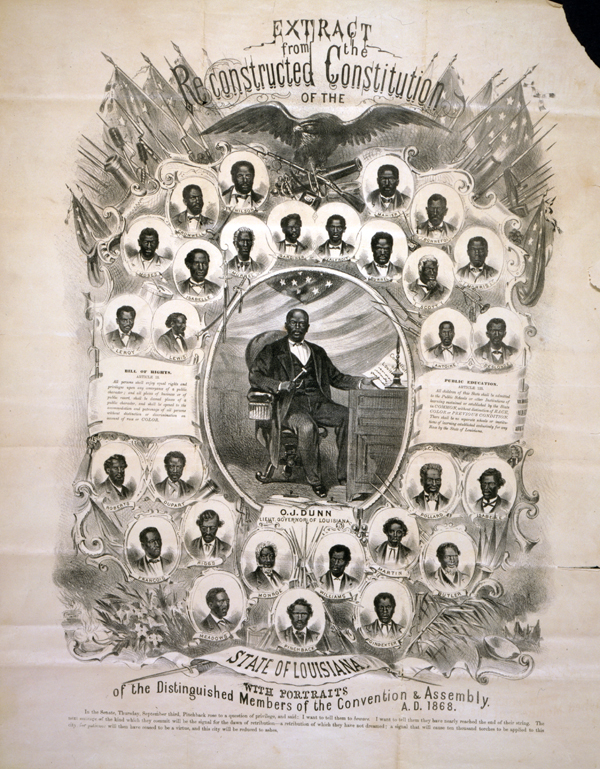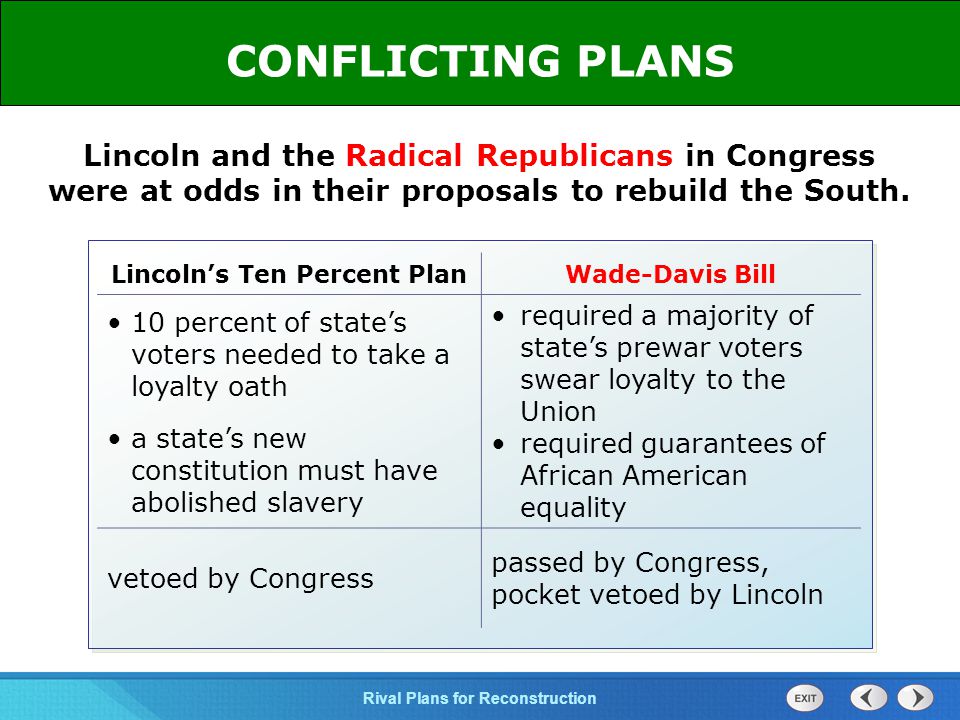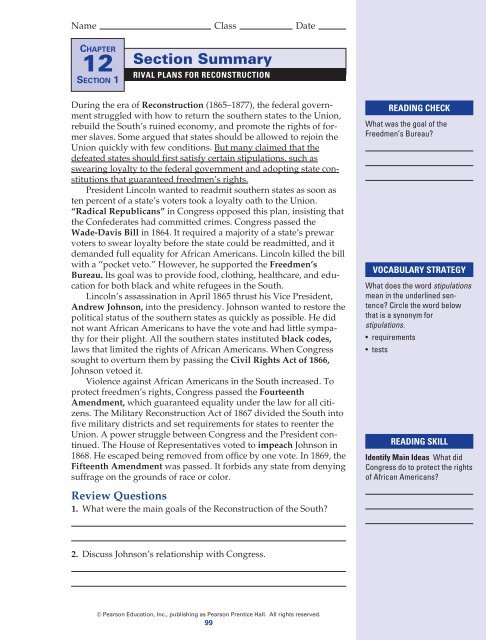After the Civil War, the United States faced the daunting task of rebuilding a nation that had been torn apart by four years of conflict. The process of reconstruction was highly controversial and divisive, with two main competing plans emerging as the dominant approaches.
The first plan, known as radical reconstruction, was championed by the Republican Party, which had emerged victorious from the Civil War. This plan called for a radical restructuring of Southern society, with the aim of ensuring that African Americans received full citizenship rights and protections. To achieve this goal, radical reconstruction proposed a number of measures, including the military occupation of the South, the confiscation of land from former Confederate leaders, and the enfranchisement of African American men.
The second plan, known as moderate reconstruction, was favored by many Democrats and some Republicans. This plan sought a more gradual approach to rebuilding the South, with the aim of minimizing disruption and conflict. Under moderate reconstruction, African Americans would be granted some but not all of the rights and protections enjoyed by white citizens. The main focus of this plan was on economic reconstruction, with the aim of helping the South to rebuild its infrastructure and economy.
Both radical and moderate reconstruction had their supporters and detractors. Those who supported radical reconstruction argued that it was necessary to ensure that African Americans received full citizenship rights and protections, and that it was the only way to prevent a return to the old slave-based system. Those who supported moderate reconstruction argued that it was a more practical and realistic approach, and that it would be less disruptive and divisive.
Ultimately, the approach to reconstruction that was implemented in the United States was a combination of both radical and moderate elements. The federal government took a number of steps to ensure that African Americans received full citizenship rights and protections, including the passage of the 13th, 14th, and 15th Amendments to the Constitution. At the same time, the federal government also pursued policies aimed at helping the South to rebuild its economy, such as the construction of railroads and the establishment of land grant colleges.
In conclusion, rival plans for reconstruction emerged in the aftermath of the Civil War, with one calling for a radical restructuring of Southern society and the other advocating for a more gradual approach. While both had their supporters and detractors, the approach ultimately taken by the United States was a combination of both, with the aim of ensuring that African Americans received full citizenship rights and protections while also helping the South to rebuild its economy.






